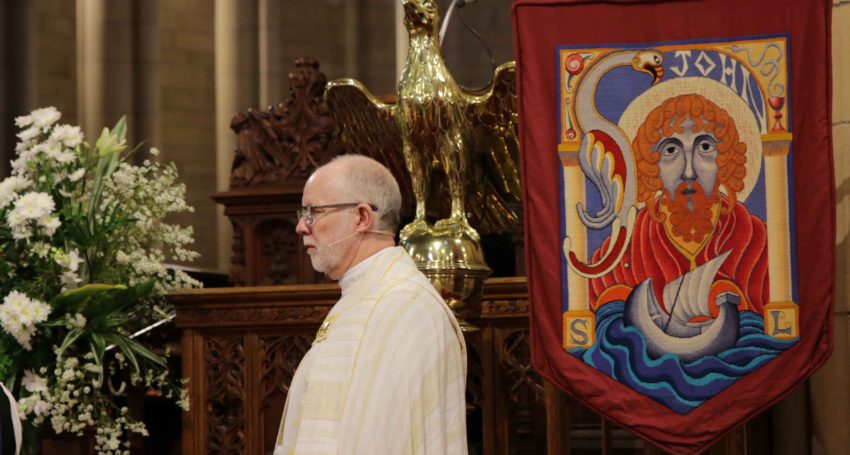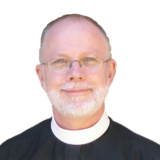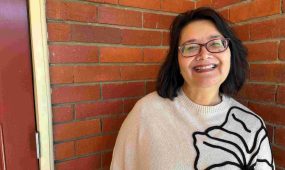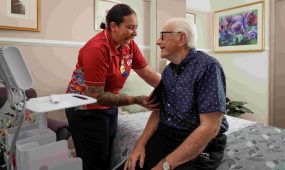Embracing the emerging future
Reflections
“The study of history reminds us that crises can be situations from which opportunity emerges. As the old passes away or crumbles, new opportunities can begin to materialise. However, for those opportunities to be grasped we need to be able to acknowledge them…We need to notice what the Spirit is inviting us to see and to respond to,” says The Very Rev’d Dr Peter Catt from Resource Church St John’s Cathedral

The Orthodox liturgy begins with some prayers and antiphons that signify the gathering of the people. There is then a ritual element called The Small Entrance during which the clergy, including the Deacon, carrying the book of gospels, enter through the doors of the iconostasis and approach the altar. Something similar to the way our liturgy begins. The Deacon then says words that can be translated, ‘Wisdom! Attend!’ Or ‘This is Wisdom. Let us attend!’
‘This is Wisdom. Let us attend!’
To attend is to be present. It is also to notice what else is present. The Orthodox expect the risen Christ to be present as they celebrate the Divine Liturgy. They expect to encounter Wisdom, Sophia – the feminine, creative principle of the Divine. And they intentionally declare that they will attend to Wisdom and to Christ.
Let us attend. It is an interesting and revelatory first invitation. Let us attend.
When the members of a Benedictine community gather for prayer, they commence by standing still in silence for a full minute; a practice they call Statio – The Holy Pause. At the end of the prayer service they do the same thing; stand in silence for a full minute. The practice of Statio is designed to ensure that the nuns and monks stop doing one thing before commencing another. They acknowledge that they have stopped doing the gardening, preparing a meal, studying an interesting topic or having a heated exchange, and they become present to the time of prayer and to the presence they expect to encounter as they come to prayer. It is about being present to the present, and to the presence that inhabits the present. At the end of the prayer time, they take the time to become present to and for the activity that follows; even if the next activity is the eating of lunch. They seek to be present to the action of eating. To attend to eating. To notice the food. Its taste, its texture. How many of us attend to our lunch in that way?
Let us attend. Statio.
Life in the western world is often characterised by busyness and distraction. We can flit from one thing to another and so not attend to anything in particular. Meals are often snatched and bolted down. Multi-tasking is considered a virtue. This year the disruption, and resultant stress, caused by COVID-19, has exacerbated the dislocating, disabling effects of culture that many live with all the time.
And yet the study of history reminds us that crises can be situations from which opportunity emerges. As the old passes away or crumbles, new opportunities can begin to materialise.
Advertisement
However, for those opportunities to be grasped we need to be able to acknowledge them. We need to see them. We need to attend to them. We need to pause long enough to notice that which is there to see. We need to notice what God is up to. We need to notice what the Spirit is inviting us to see and to respond to.
These past few months the Cathedral community has been seeking to attend to that which is emerging as we live through this very different year. Like the Orthodox and the Benedictines, we have had to be, and will need to continue to be, intentional in our attending and noticing. On a number of occasions these past few months we have been invited to reflect on questions like:
What am I finding difficult?
What am I enjoying?
What has surprised me?
What am I noticing about myself?
What am I noticing about my community?
What am I learning?
To be in a position to answer those questions we had to pause, practise our own form of statio, attend to our feelings, examine our lives, and notice that which is emerging.
By attending to such things, we are beginning to see the emerging future and are taking steps to embrace it. In their book, Presence, Peter Senge and his co-authors suggested that the future is a field that makes itself known when one attends carefully to what already is. Attend to what is. Attend to the people. Attend to the place. Attend to the Spirit. And the future will make itself known.
Advertisement
There are a number of conditions that, if in place, can assist communities to engage in such activities. These conditions all have to do with the capacity to enter into dialogue, to be collaborative and to be comfortable with working adaptively in response to emerging situations.
At St John’s we use techniques such as talking circles to ensure that dialogue is advanced. Each year we develop ministry priorities using Open Space technology. We also seek to develop the spirituality of paying attention; attending to questions so that we live into them; and seeking to use questions such as those listed above to invite community members to reflect on what is happening around us.
Presence: Human Purpose and the Field of the Future. 2008. Peter M. Senge, C. Otto Scharmer, Joseph Jaworski and Betty Sue Flowers, Crown Business.
First published in the November 2020 edition of The Eagle, the magazine of St John’s Cathedral. Read the latest edition of The Eagle online.






